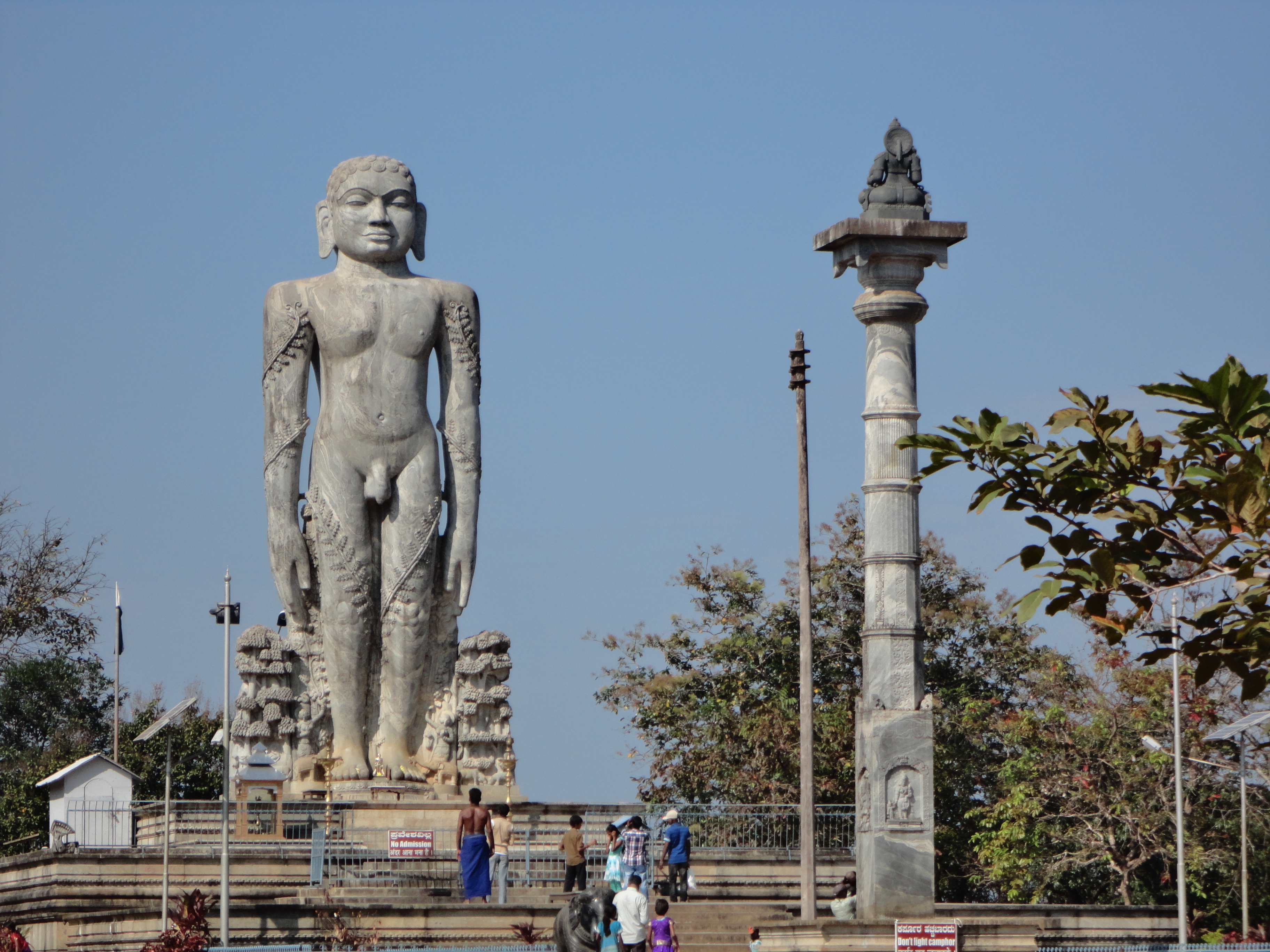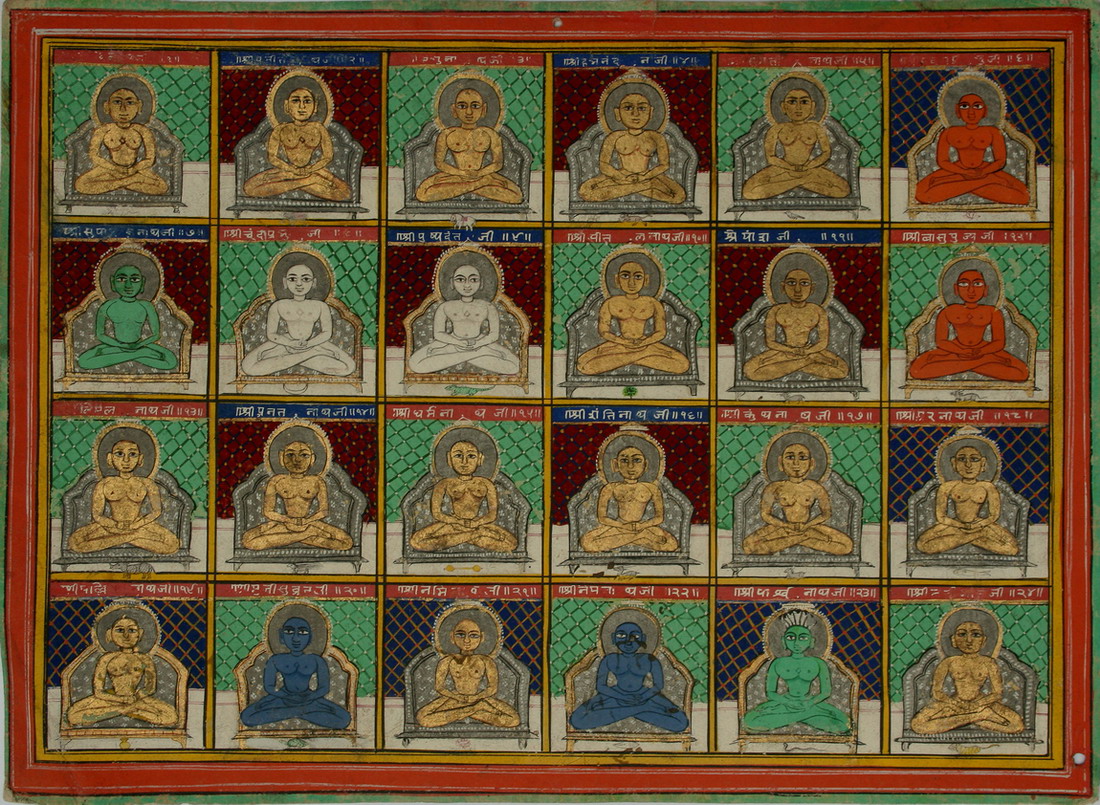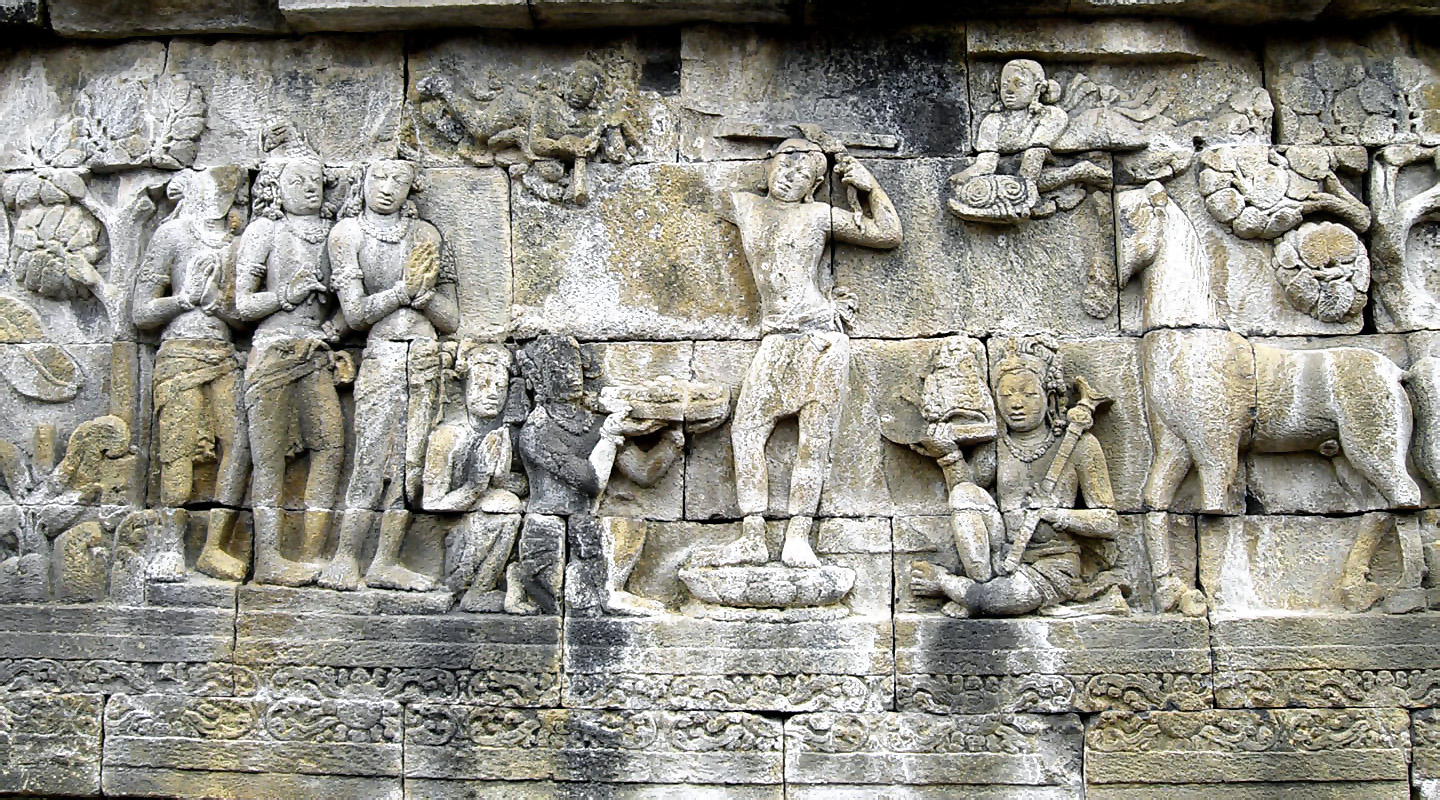|
Kayotsarga
Kayotsarga ( , ) is a yogic posture which is an important part of the Jain meditation. It literally means "dismissing the body". A tirthankara is represented either seated in yoga posture or standing in the kayotsarga posture. ''Kayotsarga'' means "to give up one's physical comfort and body movements", thus staying steady, either in a standing or other posture, and concentrating upon the true nature of the soul. It is one of the six essentials (''avasyaka'') of a Jain ascetic and one of the 28 primary attributes of a Jain monks and nuns. Twenty-one of the tīrthankaras of Jainism are said to have attained '' moksha'' in the kayotsarga “standing meditation” posture. An example of unflinching standing meditation is that of '' Arihant Bahubali'' who is said to have stood in kayotsarga for a year. Sāmayika In performing ''sāmayika'' (daily meditation), the ''śrāvaka'' has to stand facing north or east and bow to the '' Pancha-Parameṣṭhi''. He then sit down and ... [...More Info...] [...Related Items...] OR: [Wikipedia] [Google] [Baidu] |
Bahubali
Bahubali (, ) was the son of Rishabhanatha (the first ''tirthankara'' of Jainism) and the brother of the ''Chakravarti (Sanskrit term), chakravartin'' Bharata (Jainism), Bharata. He is a revered figure in Jainism. He is said to have meditated motionless for 12 years in a standing posture (''kayotsarga''), with climbing plants having grown around his legs. After his 12 years of meditation, he is said to have attained omniscience (''Kevala Jnana, kevala jnana''). Bahubali's other names are Kammateshwara and Gommateshwara, the namesake of the Gommateshwara statue dedicated to him. Legends The ''Adipurana'', a 9th-century Sanskrit poem, deals with the ten lives of the first ''tirthankara'', Rishabhanatha and his two sons Bharata Chakravartin, Bharata and Bahubali. It was composed by Jinasena, a ''Digambara monk''. Family life According to Jain texts, Bahubali was born to Rishabhanatha and Sunanda during the Ikshvaku dynasty in Ayodhya (Ramayana), Ayodhya. He is said to have e ... [...More Info...] [...Related Items...] OR: [Wikipedia] [Google] [Baidu] |
Jainism
Jainism ( ), also known as Jain Dharma, is an Indian religions, Indian religion whose three main pillars are nonviolence (), asceticism (), and a rejection of all simplistic and one-sided views of truth and reality (). Jainism traces its spiritual ideas and history through the succession of twenty-four , supreme preachers of ''dharma''. The first in the current time cycle is Rishabhadeva, who tradition holds lived millions of years ago; the 23rd is Parshvanatha, traditionally dated to the 9th century Common Era, BCE; and the 24th is Mahāvīra, Mahavira, who lived . Jainism is considered an eternal ''dharma'' with the guiding every time cycle of the Jain cosmology, cosmology. Central to understanding Jain philosophy is the concept of ''bhedavijñāna'', or the clear distinction in the nature of the soul and non-soul entities. This principle underscores the innate purity and potential for liberation within every Jīva (Jainism), soul, distinct from the physical and menta ... [...More Info...] [...Related Items...] OR: [Wikipedia] [Google] [Baidu] |
Tirthankara
In Jainism, a ''Tirthankara'' (; ) is a saviour and supreme preacher of the ''Dharma (Jainism), dharma'' (righteous path). The word ''tirthankara'' signifies the founder of a ''Tirtha (Jainism), tirtha'', a fordable passage across ''Saṃsāra (Jainism), saṃsāra'', the sea of interminable birth and death. According to Jains, ''tirthankaras'' are the supreme preachers of ''dharma'', who have conquered ''saṃsāra'' on their own and made a path for others to follow. After understanding the true nature of the self or soul, the ''Tīrthaṅkara'' attains ''kevala jnana'' (omniscience). A Tirthankara provides a bridge for others to follow them from ''saṃsāra'' to ''moksha'' (liberation). In Jain cosmology, the wheel of time is divided into two halves, Utsarpiṇī', the ascending time cycle, and ''avasarpiṇī'', the descending time cycle (said to be current now). In each half of the cycle, exactly 24 ''tirthankaras'' grace this part of the universe. There have been infini ... [...More Info...] [...Related Items...] OR: [Wikipedia] [Google] [Baidu] |
Yoga
Yoga (UK: , US: ; 'yoga' ; ) is a group of physical, mental, and spiritual practices or disciplines that originated with its own philosophy in ancient India, aimed at controlling body and mind to attain various salvation goals, as practiced in the Hindu, Jain, and Buddhist Buddhism, also known as Buddhadharma and Dharmavinaya, is an Indian religion and List of philosophies, philosophical tradition based on Pre-sectarian Buddhism, teachings attributed to the Buddha, a wandering teacher who lived in the 6th or ... traditions. Yoga may have pre-Vedic period, Vedic origins, but is first attested in the early first millennium BCE. It developed as various traditions in the eastern Ganges basin drew from a common body of practices, including Vedas, Vedic elements. Yoga-like practices are mentioned in the ''Rigveda'' and a number of early Upanishads, but systematic yoga concepts emerge during the fifth and sixth centuries BCE in ancient India's sannyasa, ascetic and ... [...More Info...] [...Related Items...] OR: [Wikipedia] [Google] [Baidu] |
Jain Monasticism
Jain monasticism refers to the order of monks and nuns in the Jain community and can be divided into two major Religious denomination, denominations: the ''Digambara'' and the ''Śvētāmbara''. The monastic practices of the two major sects vary greatly, but the major principles of both are identical. Five ''mahāvratas'' (Great Vows), from Mahavira's teachings, are followed by all Jain ascetics of both the sects. Historians believe that a united Jain ''Sangha (Jainism), sangha'' (community) existed before 367 BCE, about 160 years after the ''Moksha (Jainism), moksha'' (liberation) of Mahavira. The community then gradually divided into the major denominations. However, no evidences indicate when the schism between the Digambara, Digambaras and the Śvetāmbara, Śvetāmbaras happened. Terminology ''Digambaras'' use the word ' for male monastics and ''aryika'' for female monastics. ''Svetambara monks'' are also called ''nirgrantha'' (without bonds). ''Śvētāmbaras'' also us ... [...More Info...] [...Related Items...] OR: [Wikipedia] [Google] [Baidu] |
Moksha (Jainism)
Sanskrit ' or Prakrit ''mokkha'' refers to the liberation or salvation of a soul from ''Saṃsāra (Jainism), saṃsāra'', the cycle of birth and death. It is a blissful state of existence of a soul, attained after the destruction of all Karma in Jainism, karmic bonds. A liberated soul is said to have attained its true and pristine nature of Unlimited bliss, Unlimited knowledge and Unlimited perception. Such a soul is called ''Siddha#Siddha in Jainism, siddha'' and is revered in Jainism. In Jainism, ''moksha'' is the highest and the noblest objective that a soul should strive to achieve. In fact, it is the only objective that a person should have; other objectives are contrary to the true nature of soul. With the right view, knowledge and efforts all souls can attain this state. That is why Jainism is also known as ' or the "path to liberation". According to the Sacred Jain Text, Tattvartha sutra: Bhavyata From the point of view of potentiality of , Jain texts bifurcates t ... [...More Info...] [...Related Items...] OR: [Wikipedia] [Google] [Baidu] |
Arihant (Jainism)
''Arihant'' (, ) is a jiva (soul) who has conquered inner passions such as attachment, anger, pride and greed. Having destroyed four inimical karmas, they realize pure self. ''Arihants'' are also called ''kevalins'' ( omniscient beings) as they possess '' kevala jnana'' (pure infinite knowledge). An ''arihant'' is also called a ''jina'' ("victor"). At the end of their life, ''arihants'' destroy remaining '' karmas'' and attain ''moksha'' (liberation) and become '' siddhas''. ''Arihantas'' have a body while ''siddhas'' are bodiless pure spirit. The Ṇamōkāra mantra, the fundamental prayer dedicated to '' Pañca-Parameṣṭhi'' (five supreme beings), begins with ''Ṇamō arihantāṇaṁ'', "obeisance to the arihants". ''Kevalins'' - omniscient beings - are said to be of two kinds # ''Tirthankara kevalī'': 24 human spiritual guides who after attaining omniscience teach the path to salvation. # ''Sāmānya kevalī'': ''Kevalins'' who are concerned with their own liber ... [...More Info...] [...Related Items...] OR: [Wikipedia] [Google] [Baidu] |
Namokara Mantra
The Ṇamōkāra mantra is the most significant mantra in Jainism, and one of the oldest mantras in continuous practice. This is the first prayer recited by the Jains while meditating. The mantra is also variously referred to as the ''Pancha Namaskāra Mantra'', ''Namaskāra Mantra'', ''Navakāra Mantra'', ''Namaskāra Mangala'' or ''Paramesthi Mantra''. It is dedicated to the Panch-Parmeshthi, namely the arihant, the siddhas, the acharyas, the upadhyaya and all the ascetics. History A short inscription (dated 200 BCE to 100 BCE) found in Pale Caves in Maharashtra mentions () or (), only the first line of Namokara Mantra. In Kushana and Shaka periods of 1st century CE to the first quarter of 2nd century, only the first line was prevalent. The Hathigumpha inscription dated between 2nd century BCE to 1st century CE starts with () and (), the first two lines of Namokar Mantra. The rest of the lines are not there. It was inscribed by the Jain monarch Kharavela of Kalin ... [...More Info...] [...Related Items...] OR: [Wikipedia] [Google] [Baidu] |
Yoga Concepts
Yoga (UK: , US: ; 'yoga' ; ) is a group of Asana, physical, mental, and Spirituality#Asian traditions, spiritual practices or disciplines that originated with Yoga (philosophy), its own philosophy in History of India, ancient India, aimed at controlling body and mind to attain various Soteriology, salvation goals, as practiced in the Hinduism, Hindu, Jainism, Jain, and Buddhism, Buddhist traditions. Yoga may have pre-Vedic period, Vedic origins, but is first attested in the early first millennium BCE. It developed as various traditions in the eastern Ganges basin drew from a common body of practices, including Vedas, Vedic elements. Yoga-like practices are mentioned in the ''Rigveda'' and a number of early Upanishads, but systematic yoga concepts emerge during the fifth and sixth centuries BCE in ancient India's sannyasa, ascetic and Śramaṇa movements, including Jainism and Buddhism. The ''Yoga Sutras of Patanjali'', the classical text on Hindu yoga, samkhya-based but ... [...More Info...] [...Related Items...] OR: [Wikipedia] [Google] [Baidu] |








